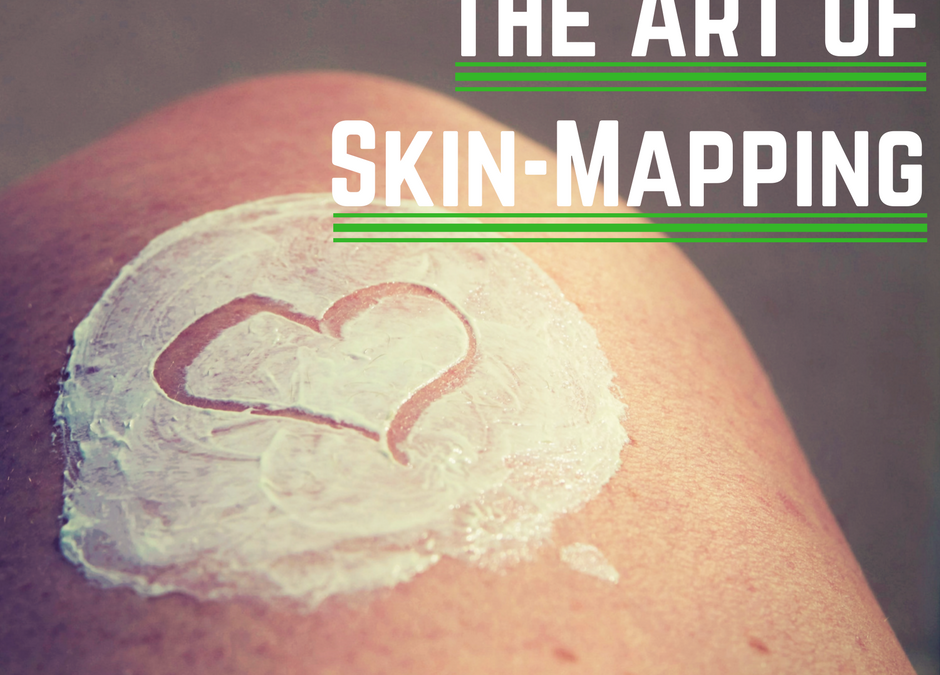
by Josefina | Jul 12, 2017 | Uncategorized
As we get older certain things happen to our bodies. We may become less flexible, we may experience back and joint pains and we may start suffering from bad posture, but these things aren’t a guarantee. If you’re determined to stay flexible, reduce pain and remain upright into later life then there are things you can do to make that happen. Something as simple as to stretch every morning before work can do wonders for your posture and ensure you remain subtle and flexible into old age, so what are you waiting for? Read on for 5 reasons why you should start stretching every day starting from right now!
Improve Your Posture
In today’s sedentary world, it is easier than ever before to develop bad posture. If you spend most of your days sitting behind a desk and/or slumped in front of a computer then your back muscles are going to tighten and your body is going to start remembering this position, making it harder to maintain good posture in your free time. Bad posture makes you appear less confident, it can lead to back pains, it may make certain tasks more difficult and in the long term it can alter your stance and slump your shoulders.
Good posture, in contrast, has loads of unexpected health and well-being benefits. Good posture can make you appear more powerful and confident and even helps alleviate anxiety as a result, it makes you appear thinner and taller, it can actually help you burn around 350 calories a day just by standing up straight, it helps keep your airways open and allows more oxygen to flow through your body to ensure proper breathing, it can help you tone up your abs and strengthen your core, it can alleviate stress and it can even make you more productive!
And you can have all of this and more if you just stretch every morning! Of course in order to see lasting results you will have to stick to your stretches and you can’t expect everything to improve straight away, but if you keep at it you’ll reap tons of benefits in the long run.
Less Pain
Doctors say that to stretch every morning can help get rid of those pesky aches and pains in your joints and muscles. These pains are often attributed to inactivity, bad posture and morning stiffness so it’s a good idea to spend a bit of time every morning warming yourself up for the day and ironing out strains or aches before you start your day.
If you suffer from back pain, then stretching in the mornings can be particularly effective. Not only will the stretching reduce the pain which is already there but it will prevent future pain by reducing tension in your back muscles and spine.
Improves Energy Levels
When you wake up you may feel too tired to stretch every morning, but if you power through you may well find that your morning stretch gives you enough energy to make it through the rest of the day! Stretching increases blood flow and moved more oxygen to your muscles and brain, which results in more energy and improved concentration, and it will also help you relax and get mentally prepared for the day.
Stretching can also increase vitality and remove more waste from your muscle tissues. A simple stretch every morning up can help you support and maintain energy levels throughout the rest of your day so you feel more rested, more alert and ready to take on whatever life throws at you!
Improves Flexibility
When you spend the majority of your time sitting down it tightens your muscles and decreases your flexibility. This is obviously a problem is you enjoy gymnastics and want to be able to do high kicks and/or do the splits into your eighties, but even if flexibility isn’t on the top of your list of concerns it is still very important for your health and well-being. Low levels of flexibility and tight muscles can make you far more susceptible to injury later in life and may therefore limit your mobility and freedom, and improved flexibility provides a number of benefits including preventing back pain, balance problems and improving fitness levels and co-ordination.
A simple stretch every morning relaxes your muscles and slowly improves your flexibility over time so without even realizing it you will be able to avoid many of the problems associated with every day wear and tear.
Improves Mood
You may think that an extra ten minutes in bed would do much more for your mood than all the stretching in the world could ever hope to achieve, but in reality stretching can do wonders for your mood levels and happiness. Stretching is physical activity and like many other forms of exercise it accelerates the release of endorphins. Endorphins are sometimes referred to as natures ‘high’ and for good reason; they improve your mood and make you happier, they relax you and make you calmer and they help take your mind off all your worries so you are better able to start your day on a positive note.
Stretching also releases muscle tension and can help you get your Zen on before you’ve even had your coffee! If you have a stressful job and tend to sweat the small stuff, then stretching in the morning can really make a difference for your mood and general well being
Getting Started
Start with this simple relaxation exercise: Slowly roll down your spine head first until you are bent over your legs as if you were trying to touch your toes. Once you are down swing your arms and gently shake your back, and then slowly roll up vertebrae by vertebra until you are in an upright position again; your head should be the first thing to go down and the last thing to go up. This simple exercise will gently exercise your spine, help straighten you out and improve relaxation at the same time!
Dou you stretch in the morning? Let me know in the comments below!

by Josefina | Jun 28, 2017 | Uncategorized
A New Method of Determining your Internal Health from the Outward Condition of Your Skin
Health science has advanced to impeccable and seemingly impossible levels. What was once thought to never be cured has been eradicated from the health scene completely. With all these incredible advancements, there has been a new surge of studies in one particular old therapeutic and pseudo-medical practice: Skin-Mapping, taking the condition of skin in particular regions of the body and predicting internal health based on those findings. So with all these advancements, the art of skin mapping can still determine your internal workings of your body by bringing notice to certain flare ups or unusual blemishes. It has now come to medical attention that this old Ayurvedic practice holds high merited worth. Let’s focus on the seven regions and zones looked to in a skin-map reading. These areas have the most evidential in skin-mapping. Pay careful attention and see if the main skin-mapping zones mentioned here hold relevance in your health life.
Zone 1: The Eyes
Not only are your eyes the windows to your soul, but they are also the window to your health. In skin-mapping, eyes can be particularly telling to the condition of your joints, intestines, thyroid gland and kidneys. Clouded and puffy eyes can indicate poor nutrient absorption in your colon or small intestine. Yellowing gives sign to weak or fatigued liver; and, swollen eye bags can give way to lowered kidney function. Overall, the eyes tell a wide story with precise details, so be sure to always check them for any discrepancies when looking in the mirror daily.
Zone 2: The Nose
The nose has a very special job, as it is the indication for positive and negative internal functions of your bloodstream and your heart. But it is no surprise, as we know that biologically when zits, blemishes, and pimples arise on the nose, the internal system flares up in heat. This is due to the connected nature of your nasal passage and your circulatory system. Any red coloration or excessive heat in the nasal area can easily be tied to issues in blood circulation. The coloring of your nose can vary when blood is not being properly advanced to the heart or improperly throughout the body, so many skin-mappers always use the nose as a pinnacle staring point when assessing health.
Zone 3: The Tongue
The many sensors on the tongue can be indicators of clotting, internal toxin buildup, and lung issues. This is due to the accumulation overtime of phlegm and other unwanted substances that the body is trying to dispel orally. The residue of these bodily fluids can cause a change in breath, orchestrated mainly by your tongue. Another clear indication can be found in the form of white residue, which can point to a buildup of toxins in the liver, lungs, and intestinal passageways. This could mean that a good detox is needed in order to rid the internal canal of harmful pathogens. One quick drink of cranberry juice or lime water daily for a week, and you could be feeling fresh and new.
Zone 4: Between the Eyebrows
Yes, this very specific facial region holds quite a bit of importance. In skin-mapping, the area between your forehead is a clear gage for problems surrounding the liver. The liver’s job is to remove toxins that are not needed after food and drink consumption so that it can be dispelled in waste. When this process is impeded, the space between your eyebrows becomes more reddened and itchy. Thus, the eyebrow area may begin to break out while the rest of the face stays clear. This can also bring about unwanted headaches, and in worse cases, head-pounding migraines.
Zone 5: Cheeks and Cheekbones
This area shows the internal state of your lungs and kidneys. More focused on the lungs, outward pollutions—such as, cigarette smoking, smog, and asthma—can cause damage to this part of the skin. Stress is also another factor that can cause damage to cheekbone skin. It is recommended that when these are becoming more damaged or more sensitive that you ingest more green, leafy vegetables. The green leafy vegetables help to protect and promote healthy functioning of your lungs and your liver.
Zone 6: The Chin
The chin in skin-mapping stands as a representation for the stomach. Eating too much of the wrong things can cause this area to break out tremendously, so limit yourself as you consume. Diet is the main assessment for this area, and the way that your stomach perceives your daily diet. If you have flare ups on your chin area, such as warts, large moles, pimples and cysts, this can be an indication of stomach pH issues. Thus, many skin-mapping experts would suggest consulting a dietitian or medical profession for further consultation.
Zone 7: The Lips
Our final zone is the lips. They can give away the current internal state of your intestines, while also mapping your hydration levels. If your lips have chapped and stay chapped no matter how much moisture you apply to them, you may not be drinking enough water for your body type. Pale lips can indicate anemia and other blood thinning conditions. And purple and blueish colors are a sure indicator of failing or corrupted internal oxygen levels.
All of the zones discussed make a nice reminder and indicator to our personal health; doing what skin-mapping is all about, by indicating internal health through observable physical features. Hopefully, with what you’ve learned, you can check for yourself in the mirror what abnormalities may arise and see if they match up with how your body is telling you it feels. And, if you cannot assess that for yourself, you can always see a medical profession or skin-mapping expert extraordinaire!
Do you ever map your skin? Tell me about your Skin-Mapping in the comments below.

by Josefina | Jun 21, 2017 | Uncategorized
What exactly is a plant-based diet?
A plant-based diet is not a diet of vegetables alone. It is a diet based on fruits, vegetables, whole grains, and legumes, which may exclude or minimize meat, including chicken, dairy products and eggs. The diet will definitely exclude foods made from refined flour and sugar, and certain refined vegetable oils.
There are several food categories from which to choose, and most of these can be included as ingredients in familiar dishes you may want to prepare, such as pizza, mashed potatoes, and burrito bases.
Here are some of the foods you can add to a plant-based diet.
- Fruit: mangoes, bananas, grapes, strawberries, blueberries, oranges, cherries, plums, lemons etc.
- Vegetables: lettuce, dark green veggie varieties, broccoli, cauliflower, cabbage, kale, cabbage etc.
- Starchy vegetables: potatoes, yams, yucca, squash, peas, sweet potatoes, peas, green beans.
- Whole grains: millet, barley, brown rice, whole wheat products, oats, whole grain cereals.
- Legumes: All varieties of beans such as black beans, lima beans, kidney beans, and cannellini beans, as well as legumes like chickpeas and lentils.
Bear in mind that iodised salt should be added to your food as it is a great source of iodine to help maintain a healthy thyroid.
The basis of a plant-based diet.
Starch-based foods and fruit form the basis of a whole-food plant-based diet. While leafy greens play an important part in the diet, they are low in calories and do not provide much of an energy source, so they may result in decreased energy levels, and leave you feeling hungry.
However, combined with starch-based foods like corn, peas, potatoes etc, provide fantastic all-round nourishment, and keep the energy pumping.
The idea of a plant-based diet is not to eat one food for a single nutrient, such as oranges for vitamin C, as an example. The main plan of a plant-based diet is eat what is known as a package of the foods that you enjoy, which contain all the essential nutrients.
This package can provide you with most of your daily nutrient needs, and be of enormous benefit to your general health.
Health benefits of a plant based diet.
- A plant-based diet automatically lowers blood pressure because of the potassium- rich legumes and nuts.
- Plants contain no cholesterol, and this includes the super-food coconut oil.
- The fiber in plants helps to fight high blood sugar, by slowing down the absorption of sugars into the blood stream.
- A low fat, plant-based diet seriously lowers your risk of falling prey to cancer.
- Weight loss happens naturally when you eat wholesome, unrefined foods, lots of fibre, take in natural vitamins and minerals, rather than animal fats and sugary, floury foods.
- Research has shown that replacing saturated animal fats with the mono-unsaturated fats found in nuts, avocados and olive oil, substantially lowers your risk of cardiovascular and heart disease.
- You will also experience less inflammation in the body which is caused by sugary and fatty foods that can lead to other problems like constipation. The fibre in a plant based diet will keep your colon healthy.
Plant-based foods contain nutrients which are in proportion according to our human needs, and a variety of whole foods will easily meet your nutritional needs.
The best way to start a plant-based diet.
Changing to an almost vegan-type will not be easy, especially if you have not been a healthy eater. Whether you want to fully embrace a plant-based diet, or perhaps keep chicken or fish as part of your diet is a decision that only you can make. But there is no doubt that reducing your meat intake, and following a plant diet is one of the best things you can do for your health.
If you are finding it difficult to immediately flip over to a new diet, here are some tips to help you on the way.
- Begin with including legumes in your regular diet, as they are generally feel-good foods, and will make you feel full, and give you energy.
- You can also substitute one or two refined items with a plant-based food in a meal each day.
- Gradually exclude red meat from your diet.
- If you decide to retain chicken and fish in your diet, make sure that the chicken is skinless, and opt for healthy fatty fish such as salmon, sardines, tuna or mackerel, for the omega 3 content.
- A good idea is to replace one or two days of your week’s meals with a full vegetarian, plant-based meal. Do this on a regular basis, until you no longer want to return to your previous way of eating.
Some meals you can try to prepare.
- Sweet potato lasagna.
- French fries done in Canola oil.
- Mashed potatoes and gravy.
- Lima bean soup.
- Tuscan white bean burgers.
- Black bean and rice burritos.
These meals are popular choices, and most of the recipes can be found on the internet.
Did you ever consider a plant-based diet?

by Josefina | Jun 14, 2017 | Uncategorized

Did you know that chewing your food for a minimum of 15 times before swallowing is actually a normal amount? In some cases upwards of 30-40 times! When it comes to chewing your food a good rule of thumb is to chew till it has turned to liquid; a piece of hard vegetable will take longer to be chewed properly compared to a piece of soft fruit.
There are 4 key benefits to chewing your food properly that increases overall health and wellbeing. Let’s go through them:
Enables the right amount of food eaten
Research has shown that chewing your food slowly and thoroughly can help a person feel full faster. In a recent study, women who ate fast consumed more calories, and felt less full than those who ate slower and chewed their food correctly. Similarly, in a study by Iowa State University, researchers found that subjects that chewed their food more reported lowered appetite.
When your food is turned to liquid before entering the stomach, your body is able to digest your food faster and more efficiently, allowing faster nutrient absorption and a wonderful sense of fullness because your body is satisfied.
Throat care
When we eat, chewing your food to an appropriate particle size, before we swallow makes sure we don’t eat a large amount in one go. This ball of food is formally called the bolus. If food isn’t chewed to a proper particle size, or still has sharp and hard edges (imagine chewing potato chips fast!), it can harm the throat.
As chewing, swallowing, and breathing in humans are intricately linked, eating fast can lead to choking. Or the food may harm the throat grazing it on it’s way down. This is when infection can occur within the throat.
To promote optimum digestion
Digestion starts in the mouth, as saliva contains enzymes to break down starch and fats. By chewing your food properly, you allow the digestive process to start even before your food reaches the stomach. After swallowing, food particles are reaching the stomach to be broken down and digested by the acidic gastric juices. Chemistry tells us that the larger the surface area to volume ratio a particle is, the quicker it is eroded and in this case, digested. Conversely, large particles make be difficult to break down, which slows down your digestion, and can slow down your metabolism over time.
By not chewing your food enough, larger particles pass through the digestive system undigested causing problems such as bloating, gas, and gastric cramps.
Mindfulness
Mindful eating relates to savoring one’s food through appreciating the way it looks, the aroma, texture and taste. By chewing your food slowly in appreciating these aspects of your food, you cultivate a mindfulness of what is being eaten. Rather than eating mindlessly, which often lead to overeating, especially when done in front of a TV.
Mindful eating is not only about slowing down so that you consume less; mindful eating can potentially decrease stress level and ensure better digesting. Science[1] shows that when the body is under stress, digestion is impacted as the body may regard it as secondary to preparing for fight or flight reflexes. Mindful eating focuses attention on the meal, relaxing the mind and thereby ensuring the body digests food properly.
Out of all the health benefits in eating slowly and chewing our food properly, the most important of all is the ability to connect with our loved ones while we eat.
Try to make each meal a potential social event if possible; catch up with your family over breakfast or teach your kids the importance of slowing down to eat and how it makes them feel. Or try to have lunch outside the office with your colleagues, reconnect with old friends through dinner. Start to eat slowly and see how it impacts those around you.
Do you eat your meals mindfull? I didn’t for a long time but since a few years I really enjoy my meals a lot more!
Let me know in the comments below.

by Josefina | May 7, 2017 | Paleo, Primal Living, Uncategorized





